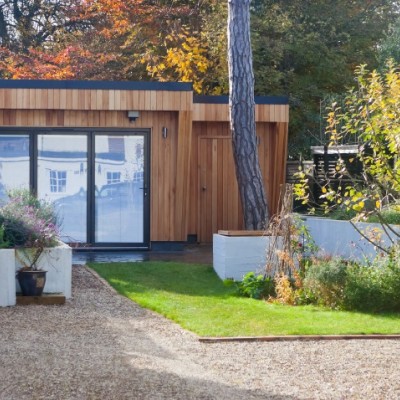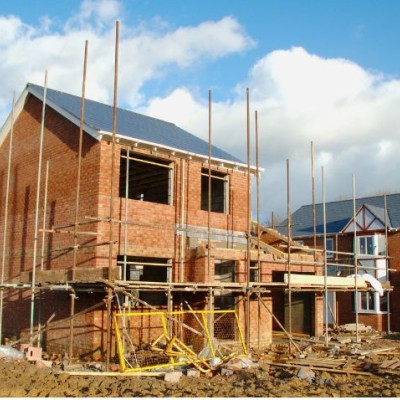- Home
- News and What's Going On At Leaders
- Property upgrades to reduce utility bills for tenants
Property upgrades to reduce utility bills for tenants

High utility costs are a common pain point for those living in rental properties. Heating, cooling, lighting and running appliances can quickly add up to substantial monthly bills, putting a strain on household budgets. As a landlord, making strategic upgrades to your property portfolio can help alleviate this burden for your tenants while also potentially increasing the value and appeal of your investment.
Landlords can make numerous cost-effective improvements to reduce energy consumption in a home and lower the utility costs for their tenants, from simple draught-sealing to more involved appliance replacements and retrofits. Making these upgrades doesn’t need to break the bank, but it can make all the difference to tenants who will appreciate the financial relief. Here, we’ll explore several practical, budget-friendly upgrade options landlords should consider, helping their tenants save money on utility bills and lower the management costs of a rental property.

Energy-efficient appliance upgrades
One of the most impactful upgrades landlords can make to reduce utility costs for tenants is replacing old, inefficient appliances with eco-certified models. Energy-efficient appliances are designed to use significantly less electricity, gas or water than standard models, resulting in meaningful utility savings each month. When selecting new refrigerators, dishwashers, washing machines or other major appliances for a rental property, opting for A-rated options is a smart investment.
In addition to traditional household appliances, property owners should also consider upgrading any gas-powered equipment, such as furnaces or water heaters, to more efficient electric alternatives. For example, installing an electric tankless water heater or a heat pump water heater can cut water heating costs by up to 50% compared to a standard gas-powered unit.
Similarly, electric fireplaces have become an increasingly popular and energy-efficient replacement for gas-powered fireplaces in rental properties. Modern electric fireplaces deliver the ambiance of a traditional fireplace with a fraction of the energy consumption and without the need for a gas line. These appliance upgrades may require a higher upfront cost, but the long-term utility savings they provide for tenants make them a worthwhile investment.
Low-cost insulations
Air leaks around windows, doors and other openings in the building envelope can allow costly heated or cooled air to escape, forcing your heating system to work overtime to maintain comfortable temperatures inside. Sealing these air leaks through caulking, weatherstripping or other simple DIY methods can significantly reduce energy waste and lower utility bills for tenants, creating a more comfortable property.
In addition to air sealing, bolstering insulation in the loft is another smart insulation upgrade. Proper loft insulation is crucial for regulating indoor temperatures and preventing heat transfer, and it regulates temperatures year-round, not just in the wintertime. Landlords can choose between blown-in insulation or traditional batt (or blanket) insulation, with each option offering its own advantages.
Blown-in insulation can be more effective at filling tight spaces and sealing gaps, while batt insulation is typically easier for DIY installation. Regardless of the approach you choose, improving the insulation in a rental property's loft, and any other areas where air can escape, is a relatively low-cost project that delivers lasting benefits for both the landlord and tenants.

Update window treatments
Old, single-pane windows can be a major source of heat loss, compromising a home's energy efficiency and contributing to high utility bills. While replacing all the windows in a property with new, double-glazed units is an effective solution, it can also be an expensive undertaking. Fortunately, there are several more cost-effective alternatives that can significantly improve a window's thermal performance without the need for a full replacement.
One option is to install secondary glazing systems. These essentially create a second pane of glass in front of the existing window, trapping an insulating layer of air in between. Secondary glazing kits are relatively inexpensive and can be installed easily without the need for tradespeople, providing enhanced insulation at a fraction of the cost of new windows.
Thermal window blinds or curtains offer another budget-friendly upgrade. These specialised window treatments are designed to create an additional barrier against heat transfer, helping to retain warm air in the winter and block solar heat gain in the summer. Or, for a quick temporary fix, window films are also an option. These adhesive plastic sheets are applied directly to the glass to mimic the insulating properties of double-glazing. While not as durable as other solutions, window films are an easy and inexpensive way to improve a property's thermal performance in the short term.
Lighting retrofits
Upgrading the lighting in a rental property is another excellent way for landlords to help reduce utility costs for tenants. The transition to LED light bulbs is one of the easiest and most impactful lighting improvements a landlord can make, but landlords can further enhance the energy efficiency of a rental property's lighting system by installing motion sensors and timers.
These automated controls ensure lights are only on when they’re needed, preventing unnecessary electricity usage in unoccupied rooms or common areas and increasing convenience in the home for tenants. Lighting retrofits represent a low-cost upgrade that delivers meaningful utility savings and improvements to the tenant experience instantly.
Heating system upgrades
A significant opportunity for landlords to reduce utility costs for tenants lies in upgrading the property's heating systems. Older, inefficient boilers and radiators can be major energy hogs, driving up monthly utility bills. Replacing these ageing components with new high-efficiency models means landlords can deliver substantial savings for tenants and prevent the need for costly repairs down the road.
Beyond just upgrading the heating equipment, owners should also consider installing programmable or smart thermostats. These controls allow tenants to automatically adjust the temperature based on their schedules and preferences, avoiding unnecessary heating when the home is unoccupied. The energy savings from programmable thermostats can be considerable, potentially reducing a rental property's heating use by as much as 30% annually.
Enhancing the energy efficiency and ease of maintaining a rental property makes good financial sense, but it also boosts your reputation as a landlord and property investor. These upgrades improve the comfort of the home, lower utility costs and will keep the property well maintained for years to come to protect your investment. It’s a win-win scenario that encourages longer-term tenancies and builds positive landlord-tenant relationships.
Looking for advice?
If you're looking to let or sell your property, we can help. Get in touch with your local branch or book in for a property valuation.

Contact Us
Got a question, general enquiry or something else?
You may also like
Since we started in 1983 we have grown to one of the UK’s largest property groups, we can save you time and money by offering a range of services and expertise under one roof.



